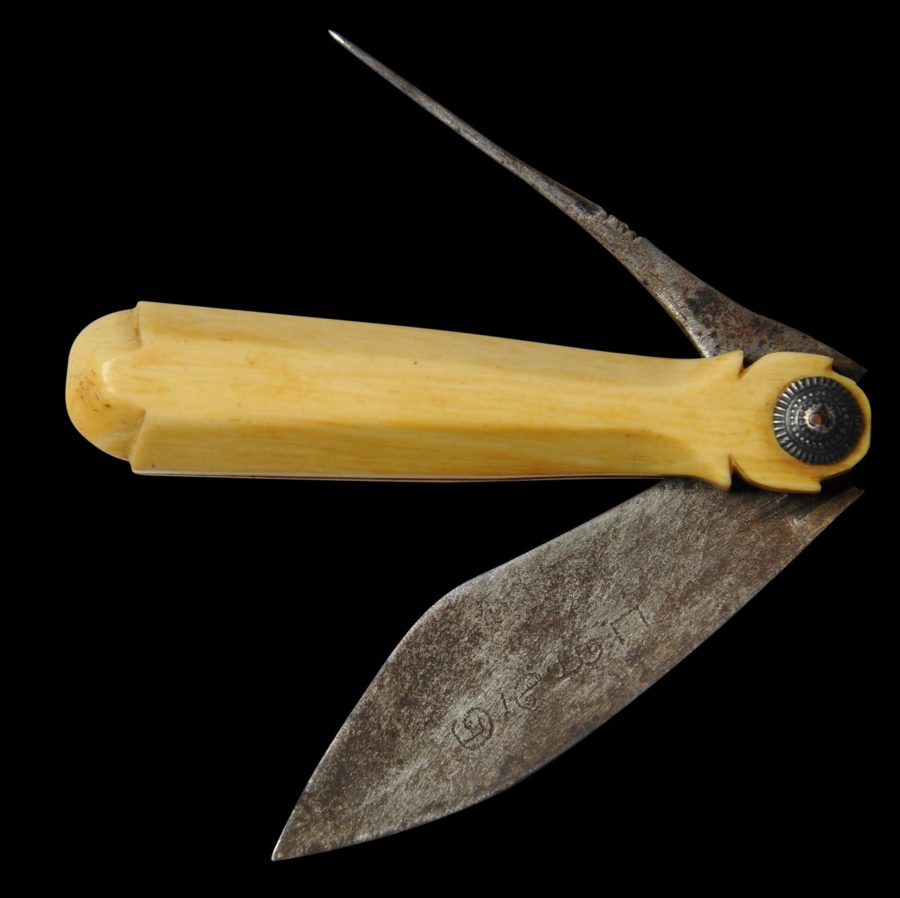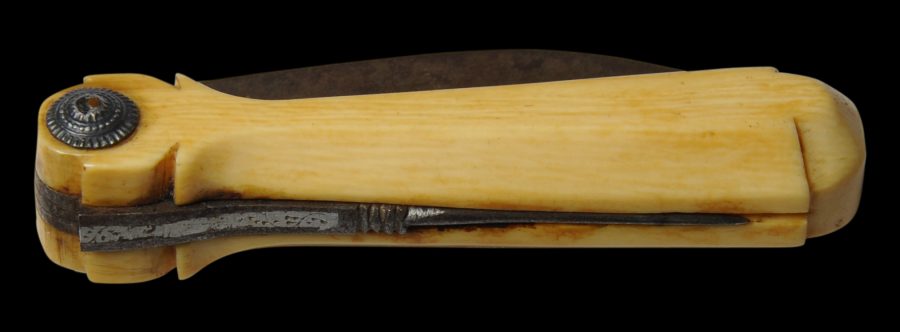This knife and stylus set was used by a South Indian Chettiar bookkeeper to trim and engrave dried palm leaf pages to keep account of loans and repayments and the like. The small pieces of palm leaves written with amounts owing became known as chits, probably after the name Chettiar.
The stylus and curved blade are of steel and are held in a bone casing. The blade is engraved on one side with three initials in Tamil. The Chettiars lived in large houses with their extended families and most items that belonged to a Chettiar would be engraved with the owner’s initial to identify it as belonging to that person. As items were passed down through generations, the initial of the subsequent owner would be added and so on. The three initials on this pieces suggest that it was handed down through three generations.
The eyelet that holds the bone and steel together is of silver. There is also decorative silver inlay along the outer edge of the stylus, and the blade.
The set is in fine condition.
The Chettiars are a caste group with a caste-occupation linkage of money changing and lending, and trading. Tightly knit, the Chettiars have nine temples in Chettinad, and all Chettiars regardless of where they are born, belong to one or another of these nine temples, which effectively function as clan temples.
Other than in southern India, prominent Chettiar communities established themselves in Southeast Asia, particularly Rangoon and Singapore. The wealth that derived from their occupation and from their cross-border spatial dispersion meant that many Chettiar families became very wealthy. The community developed a preference for massive, often fort-like mansions (called nattukottai) in Chettinad, many of which housed the extended family and which took up whole blocks in village streets. The mansions were sumptuously decorated. The fortunes of the Chettiars declined after the Second World War. Much of their wealth was overseas in Burma, Sumatra and Malaysia. But with rising nationalism, ethnic tension and even nationalisation, much of their wealth was lost or confiscated, and old sources of income, such as handling much of Southeast Asia’s international rice trade was lost.
References
Muthiah, S., The Chettiar Heritage, Chennai, 2006.





